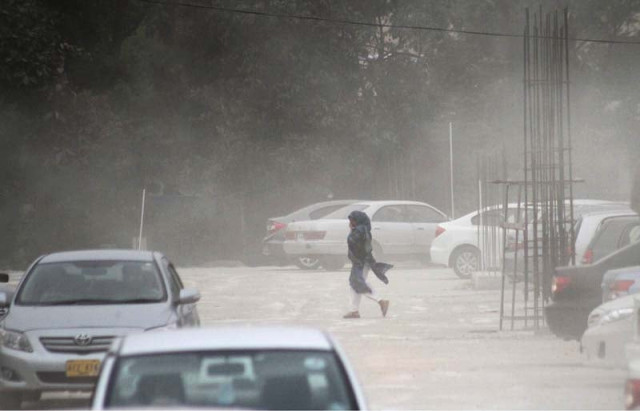Lahore:
Like many countries in the world of world, Pakistan also carries the heavyweight of climate change. While heat waves are the most visible manifestation of extreme temperatures, this year, the unprecedented duration and intensity of the monsoon season have sounded meteorologists.
Climate experts are of the opinion that climate change has a strongly impact of Pakistan, in particular the province of Punjab, where precipitation has been unusually heavy and frequent. Compared to previous years, precipitation recordings have exceeded normal levels in areas that have already experienced less intense weather conditions, as the increase in global temperatures has disrupted the monsoon system in the region. In particular, the increase in temperatures of the sea of Oman and the Indian Ocean led to monsoon winds loaded with humidity, causing heavier and more prolonged showers.
PDMA spokesperson Chadhry Mazhar confirmed that the Mousson season had started earlier than usual this year. “As a general rule, the monsoon season begins around July 15, but in 2025, it started on June 25-previously considered a pre-mousson phase. The first rains of this year were exceptionally intense, and now it is planned that the monsoon will continue until least in mid-September.
According to the latest figures obtained from the meteorological department and the Punjab Disaster Management Authority (PDMA), the Chakwal district recorded 423 mm of precipitation in a single day between the night of July 16 and 17; The highest of any place in Punjab this season. During the first half of 2025, precipitation in Punjab exceeded normal levels of 73%. The reports of the National Disaster Management Authority (NDMA) and the PDMA indicated that in the fourth fate of the monsoon, not only the Punjab, but the whole country received much more precipitation than the seasonal average. Overall, Punjab has seen an increase of 30 to 36% of precipitation this season compared to previous years.
Meteorologists have estimated that if normal monsoon precipitation for Punjab is between 800 and 900 mm, the total of this year has already crossed 1,000 mm and could reach 1,200 mm by the end of the season. Despite the alerts issued by the Meteorological Department and the PDMA, local administrations were not prepared for unprecedented showers and now react to it as if it were a natural disaster.
Dr. Saadia Khalid, a climate change expert, said the monsoon rains have become more powerful and now follow unconventional routes. This is why regions like Punjab, which have rarely experienced such intense rains, are now experiencing a sharp increase in the volume and the intensity of precipitation. In addition, urbanization, deforestation and changes in the use of land worsens the impact of these rains.
Consequently, experts have agreed that if immediate measures are not taken on carbon emissions, land management and the development of a climate policy, extreme weather conditions – including strong precipitation and floods – will become the new normal in Punjab.




